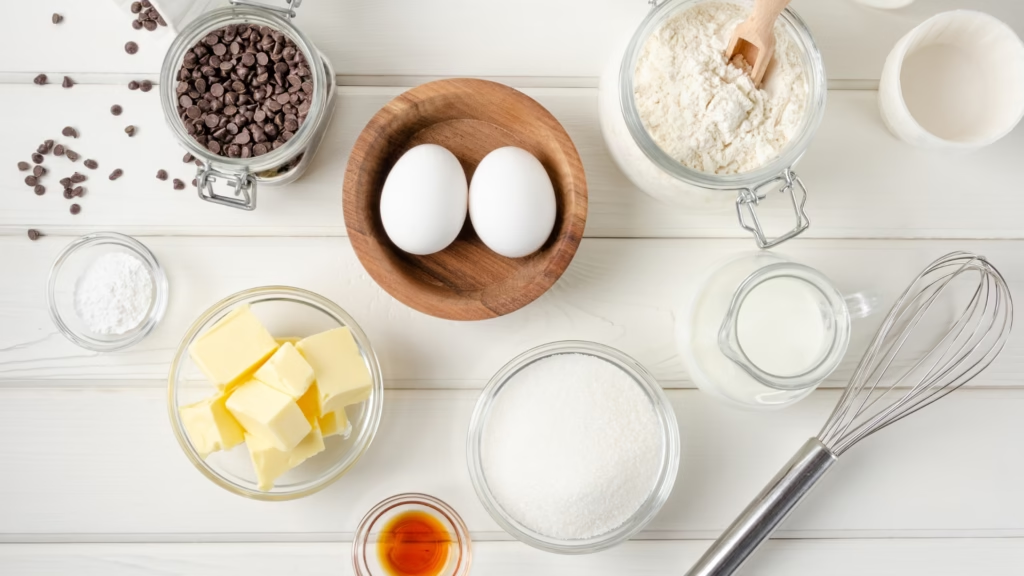Secrets to Soft and Chewy Cookies: Baking Science Explained

Are you tired of baking cookies that turn out hard or crumbly? There’s nothing quite like biting into a warm, soft, chewy cookie, sweet comfort in every bite. If your cookies often turn out dry or crumbly, don’t worry, we’ve got you covered.
At Current Cravings, we understand the joy of biting into a perfectly soft, chewy cookie. This guide will explain the baking science behind soft and chewy cookies and share expert tips to help you bake the best chewy cookies that melt in your mouth. Whether you’re making classic chocolate chip cookies or experimenting with new flavors, these secrets will ensure your cookies come out perfect every time.
Why Do Cookies Turn Out Hard?
Before diving into the secrets, it’s important to understand why cookies sometimes turn out dry or crunchy. The texture of cookies depends on the balance of ingredients, mixing methods, and baking techniques.
- Too much flour or packing it tightly
- Overbaking until cookies look done
- Skipping the chilling step
- Using only white sugar
Let’s explore how to avoid these pitfalls with Current Cravings’ expert advice.
4 Essential Ingredients for Chewy, Tender Cookies
1. Butter: Melted vs. Softened
Using melted butter instead of softened butter helps create a denser dough that spreads less, resulting in thicker, chewier cookies. Melted butter coats the flour proteins, which limits gluten formation and keeps cookies tender. For extra flavor, try browning the butter before mixing; it adds a rich, nutty taste!
2. Sugar: The Power of Brown Sugar
Brown sugar contains molasses, which adds moisture and acidity, helping cookies stay soft and chewy. Using more brown sugar than white sugar is a proven trick to keep cookies moist. For best results, use dark brown sugar for deeper flavor and softness.
3. Flour: The Right Type and Amount
Use all-purpose flour for balanced protein content that supports chewiness. Avoid using too much flour, which can make cookies dry and cakey. Measure flour correctly by spooning it into the measuring cup and leveling it off to prevent packing.
4. Eggs: Extra Egg Yolk for Moisture
Adding an extra egg yolk (instead of a whole egg) enriches the dough with fat and protein, improving chewiness without adding too much liquid. Egg yolks help bind ingredients and add tenderness.

Mixing Techniques to Maximize Cookie Chewiness
Mix Sugar and Butter Thoroughly
Beat the sugar and melted butter well to dissolve sugar crystals. This creates a caramel-like base that contributes to chewiness and flavor.
Avoid Overmixing After Adding Flour
Once you add flour, mix just until combined. Overmixing develops gluten, which makes cookies tough instead of soft.
Chill Your Dough
Refrigerate your cookie dough for at least 30 minutes to 48 hours. Chilling solidifies fats and allows the flour to hydrate fully, resulting in thicker, chewier cookies with enhanced flavor.
Baking Techniques for Perfect Soft and Chewy Cookies
Bake at a Lower Temperature
Bake cookies at 325°F (160°C) instead of higher temperatures to ensure even baking and prevent drying out.
Use Larger Cookie Scoops
Form larger dough balls to reduce spreading and keep cookies thick and chewy.
Leavening Agents: Baking Soda vs. Baking Powder
- Baking soda creates spread-out, craggy cookies with a chewy texture.
- Baking powder produces lighter, cakier cookies.
For soft and chewy cookies, use baking soda or a combination of both for balance.
Common Mistakes to Avoid
- Using too much flour or packing it tightly.
- Overbaking cookies until they look fully done; remove them when edges are set but centers are still soft.
- Skipping the chilling step, which leads to flat, crispy cookies.
- Using only white sugar instead of brown sugar.
Pro Tips for Soft and Chewy Cookies by Current Cravings
- Use coarse brown sugar for extra moisture.
- Substitute some butter with shortening for softer texture.
- Add a teaspoon of cornstarch to the flour for extra tenderness.
- Sprinkle a pinch of sea salt on top before baking to enhance flavor.
Adapting Soft and Chewy Cookies for Dietary Preferences
At Current Cravings, we know everyone’s dietary needs are different. Here are some simple ways to adapt your cookie recipes for special diets:
- Gluten-Free: Use a gluten-free all-purpose flour blend that includes xanthan gum for structure. This keeps your cookies soft and chewy without gluten.
- Vegan: Substitute butter with vegan margarine or coconut oil, and replace eggs with flax or chia egg substitutes (1 tablespoon ground flaxseed + 3 tablespoons water per egg). These swaps maintain moisture and texture.
- Dairy-Free: Use plant-based butter alternatives and dairy-free chocolate chips to enjoy soft cookies without dairy.
These adaptations make it easy for everyone to enjoy delicious, soft, and chewy cookies made at home.
Conclusion: Master the Art of Soft and Chewy Cookies with Current Cravings
By understanding the baking science behind ingredients, mixing, and baking techniques, you can easily bake soft and chewy cookies that everyone will love. Remember to use melted butter, brown sugar, chill your dough, and bake at the right temperature. Avoid common mistakes and try the pro tips for even better results.
If you found these baking secrets helpful, share this article with your friends and family! Ready to enjoy soft and chewy cookies without the hassle of baking?

